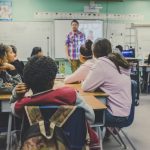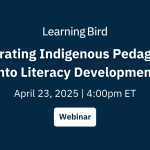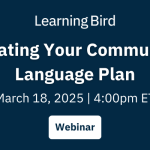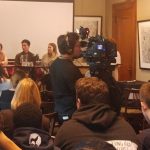Community Spotlight: Treaty Six Education Council
Our work with Treaty Six Education Council (TSEC) has yielded engaging digital resources and memorable experiences over the past three years. The Council provides educational support to 12 First Nations communities in Saskatchewan. It creates a sense of cultural pride amongst learners through academic excellence. Learning Bird’s Education Account Lead Rebecca Smith has worked with Treaty Six Education Council for two years. She observed the Council’s commitment to helping learners feel proud of their culture and identity. “The biggest priority at TSEC is making sure learners see their language and their culture reflected in the materials used in school,” Rebecca said. “There is a big focus on building land-based and culture-based activities and learning experiences, which is amazing to see.”
Treaty Six Education Council: A Place to Share Knowledge and Resources
TSEC’s core values include honouring Indigenous knowledge and experiences and preserving its Treaty, language, and cultural teachings for future generations. The Council works toward this goal by developing land-based learning kits with Elders and educators from its member Nations. During Rebecca’s visit to TSEC last month, she noted that the kits, designed for specific grades around certain topic areas, help educators save time. They also provide access to culturally-relevant resources readily. Instead of educators having to source resources on their own, they are available through the Council. “TSEC acts as a repository of knowledge and experiences that educators can tap into easily,” said Rebecca. “The Council is a place educators can go for support and physical resources.”
TSEC also hosts a variety of cultural activities, including pow wows, feasts, and festivals. These help learners connect to their heritage and language. Last year, learners shared their culture with other learners in Canada using technology. TSEC learners in grades 3-8 participated in a culture-sharing exercise with pen pals in British Columbia. They used a webcam to connect the two classrooms and showcased pow-wow culture through singing, dancing, and drumming.
Blending Learning, Technology, and Culture
One of TSEC’s main priorities is helping learners find innovative ways to connect to their culture. In the 2017/18 school year, TSEC staff worked collaboratively with Learning Bird to create resources combining technology, gaming, and cultural knowledge. One resource uses Minecraft, a video game enabling players to build a 3D world. Learners learn about the teachings and interpretations of the Medicine Wheel while playing the game.
Learners first explore the cultural significance of the Medicine Wheel. They examine the elements, seasons, stages of life, and medicines that correspond to each quadrant. Learners then consider how and why other cultures interpret the Medicine Wheel differently. Next, educators introduce learners to Minecraft. Minecraft is a “sandbox” game, an allusion to a child’s sandbox with few rules but many opportunities for creative play. The challenge is for learners to map out and create a Medicine Wheel reflecting their community.
Resources With Relevance
Last year, we worked with TSEC to create resources to support middle school English language arts, science, and math classes. TSEC staff wanted to build videos, activity handouts, and presentations that included examples learners could relate to. Some of the ELA resources ask learners to practise descriptive writing skills after viewing paintings by Cree painter Allen Sapp. The science resources help familiarize learners with medicinal plants in the boreal forest. Building math resources with relevant community examples incorporating Indigenous ways of knowing and teaching interested the staff. They worked closely with us to create resources on calculating the surface area and volume of right rectangular prisms through a narrative about sled dogs.
Treaty Six Education Council Educators Take to New App
Working with TSEC staff over the past couple of years gives us insight into their dedication and desire to push boundaries. As Learning Bird launched a new version of our app this summer, we were excited to see how TSEC educators responded to its improved functionalities. Rebecca observed the educators’ willingness to adapt to new technology throughout last month’s onsite training session. “There were a couple of instances where I saw educators helping other educators navigate the platform,” said Rebecca. “Seeing the educators themselves moving from the learner to the educator role within the short time-frame of our workshop was impressive.”
Culture and History Central for Treaty Six
One of Rebecca’s most memorable experiences on her trip to Treaty Six was visiting the Battle of Cut Knife Hill National Historic Site on the Poundmaker Reserve. TSEC’s IT Learning Support Coordinator Sarah Thompson took Rebecca to the site. It includes several plaques and information about the military conflicts between the Canadian government and Métis and First Nations Peoples. The history of Chief Poundmaker particularly struck Rebecca. She wanted to learn about the reasons for the conflict. She was very glad to have the opportunity to see his grave, pay her respects, and honour his legacy. The visit to the site epitomizes TSEC’s commitment to education and celebrating its people’s history. The Council sums up these values well in their mission statement to “Honour the Past, Engage the Present, and Embrace the Future.”
We look forward to continuing our work with the entire Treaty Six Education Council community and building additional resources to support the learners. Rebecca will head back to visit many TSEC schools in a few months. She will spend time one-on-one with educators to help them integrate the resources we’ve created together over the past three years.








